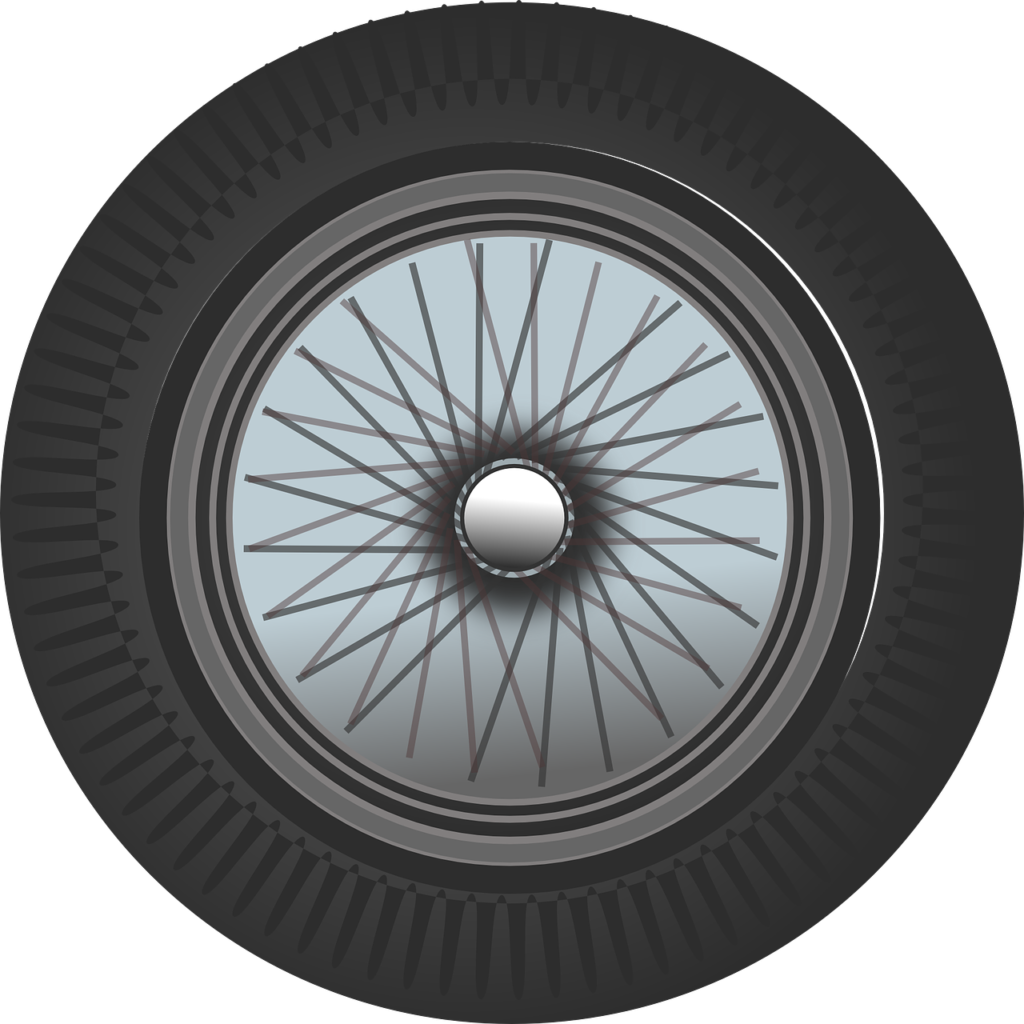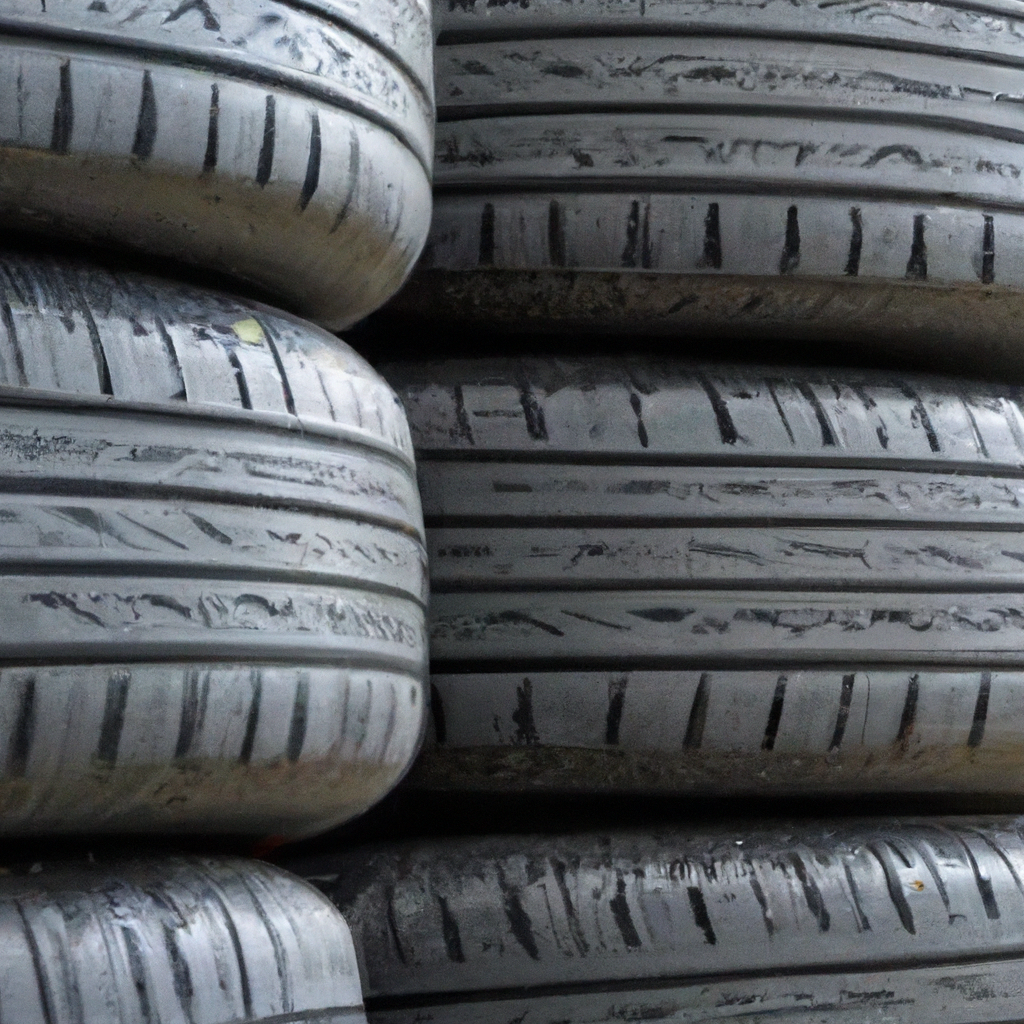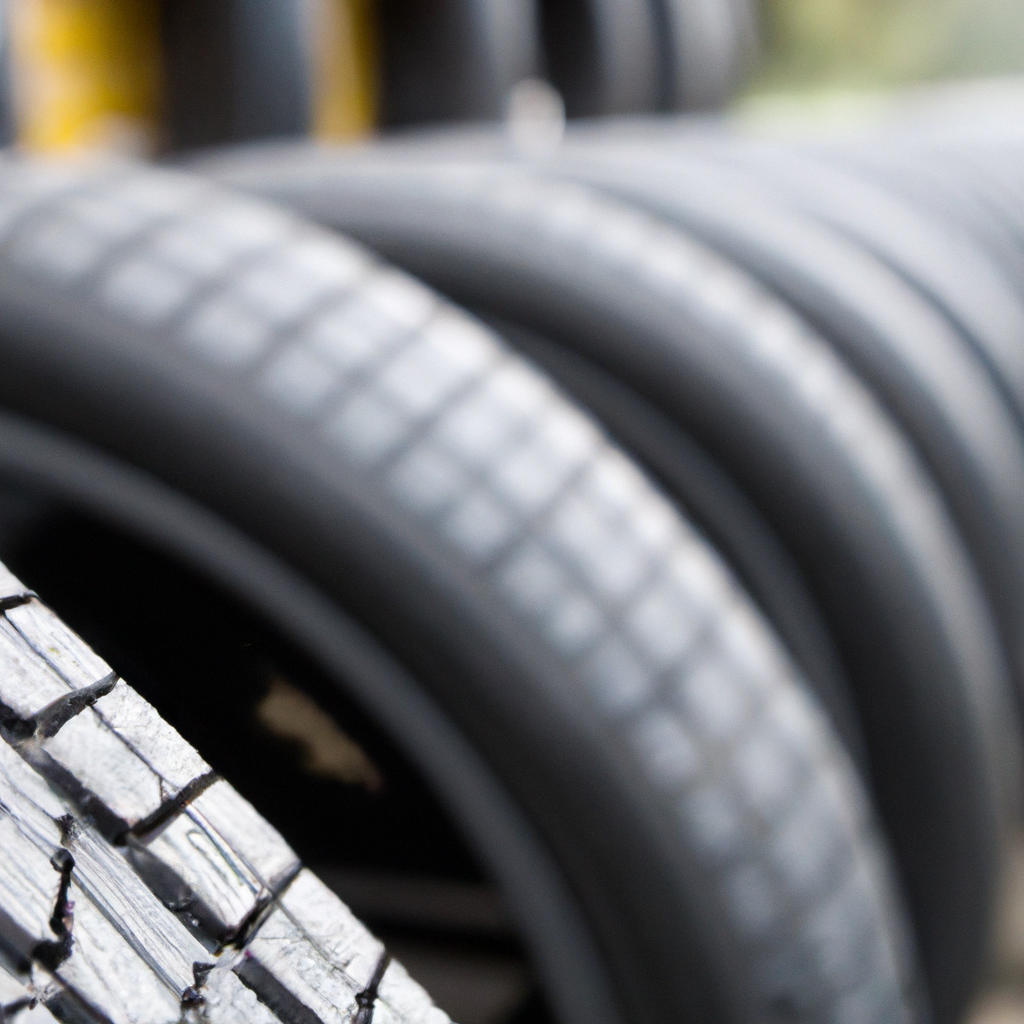Taking good care of your tires is essential if you want them to last longer and perform at their best. From regular maintenance to proper driving habits, there are various ways you can extend the lifespan of your tires. In this article, we will explore some simple yet effective tips that will help you maximize the longevity of your tires, saving you money and ensuring your safety on the road. So, if you’ve ever wondered how to keep your tires in top shape, keep reading for valuable insights and practical advice.

Regular Maintenance
Regular maintenance is key to extending the lifespan of your tires. It is essential to check the tire pressure regularly to ensure optimal performance and safety. Maintaining the correct tire pressure can improve fuel efficiency, enhance tire longevity, and provide a smoother ride. Make it a habit to check the tire pressure at least once a month and before long trips.
In addition to checking the tire pressure, it is important to rotate your tires regularly. Tire rotation involves moving the tires from one position to another to promote even wear. This helps to extend the lifespan of the tires and maximize their performance. Consult your vehicle’s owner’s manual for the recommended tire rotation pattern and frequency.
Another crucial aspect of tire maintenance is aligning and balancing your tires. Proper tire alignment ensures that the wheels are parallel and the vehicle drives straight. It improves vehicle handling, reduces tire wear, and increases fuel efficiency. Tire balancing, on the other hand, helps distribute the weight evenly across the tire and wheel assembly, preventing vibrations and uneven wear. It is recommended to have your tires aligned and balanced by a professional regularly or when you notice any signs of misalignment or imbalance.
Furthermore, it is vital to inspect and repair any damage to your tires promptly. Any cuts, punctures, or bulges can compromise the tire’s integrity and safety. Inspecting your tires for potential issues such as sidewall damage, tread wear, or foreign objects embedded in the rubber is important. If you notice any damage or concerns, have them addressed by a professional tire technician as soon as possible.
Proper Driving Habits
Your driving habits play a significant role in the lifespan of your tires. Avoiding aggressive driving, such as sudden starts, hard braking, and fast cornering, can help prolong tire life. Aggressive driving puts excessive stress on the tires, leading to increased wear and reduced longevity. Practice smoother driving techniques, including gradual acceleration and deceleration, to minimize unnecessary strain on the tires.
Another important consideration is to avoid overloading your vehicle. Exceeding the recommended load capacity can put excessive weight on the tires, leading to premature wear and potential tire failure. Check your vehicle’s owner’s manual or consult with a professional to determine the maximum load rating for your tires. Avoid carrying unnecessary weight and distribute the load evenly in your vehicle if you need to transport heavy items.
Furthermore, try to avoid potholes and rough roads as much as possible. Potholes can cause serious damage to your tires, including punctures, sidewall damage, and rim bends. Rough roads, especially those with sharp debris or uneven surfaces, can also accelerate tire wear. Whenever possible, choose routes with well-maintained roads and drive cautiously when encountering potholes or rough terrain.
Tire Storage
Proper tire storage is essential when you are not actively using a set of tires. Whether you are storing winter tires during the summer or spare tires until needed, following these storage tips can help extend their lifespan. First and foremost, make sure to store your tires properly by placing them in a cool, dry, and well-ventilated area. This can help prevent degradation caused by environmental factors and reduce the risk of damage.
Using tire covers can offer an extra layer of protection during storage, shielding the tires from sunlight and dust. Direct sunlight can cause the rubber to deteriorate and discolor over time. Tire covers also help keep the tires clean and prevent contact with oils, chemicals, or other contaminants that can affect their condition.
Furthermore, it is important to avoid exposing your tires to extreme temperatures. Extreme heat or cold can accelerate tire aging and cause damage. If possible, store your tires away from temperature extremes, such as in a basement or a climate-controlled storage facility. Avoid storing tires near sources of heat or cold, such as radiators or windows, to minimize the effects of temperature fluctuations.
Tire Selection
Selecting the right tires for your vehicle is crucial for maximizing their lifespan. Consider the following factors when choosing tires:
-
Choose the right tire type: Different vehicles and driving conditions require different types of tires. Whether you need all-season tires, performance tires, or winter tires, selecting the appropriate tire type for your specific needs can greatly impact their durability and longevity. Consult with a tire professional to determine the most suitable tire type for your vehicle.
-
Consider the tread life warranty: Tread life warranty indicates the estimated lifespan of the tire. When comparing different tire options, take into account the tread life warranty offered by the manufacturer. Keep in mind that the actual lifespan can vary depending on various factors such as road conditions, driving habits, and maintenance.
-
Opt for higher quality tires: Investing in higher quality tires can often result in longer lifespan and better overall performance. High-quality tires are typically constructed with superior materials and advanced tread designs, providing enhanced durability and traction. While they may come at a higher initial cost, they often offer better value in the long run due to increased longevity.
Consult with a tire professional or do thorough research to find the best tires for your specific vehicle and driving needs.

Seasonal Considerations
Seasonal changes can significantly impact tire performance and lifespan. To optimize safety and durability, it is important to consider the following:
-
Use appropriate tires for each season: Different weather conditions require different tire types. All-season tires are suitable for moderate climates, offering a balance between performance, traction, and durability. However, in regions with extreme winter conditions, using dedicated winter tires can provide superior traction and handling on icy or snowy roads. Switching to winter tires during the colder months and back to all-season tires in milder seasons can help prolong tire life.
-
Consider using winter tires: Winter tires are specially designed to perform in cold temperatures, snow, and ice. Their unique tread patterns and softer rubber compounds provide enhanced grip and traction under winter conditions. Using winter tires when necessary can not only improve your safety but also extend the lifespan of your all-season or summer tires by reducing their exposure to harsh winter elements.
-
Be cautious when driving in extreme weather: Whether it’s heavy rain, snowstorms, or intense heat, extreme weather conditions can impact tire performance and longevity. Reduce your speed, maintain proper following distance, and exercise caution when driving in adverse weather. Driving too fast or aggressively in extreme conditions can accelerate tire wear and increase the risk of accidents.
Proper Tire Inflation
Maintaining the proper tire inflation is essential for tire longevity and safety. Follow these guidelines for proper tire inflation:
-
Follow the recommended tire pressure: Refer to your vehicle’s owner’s manual or the tire placard on the driver’s side door jamb for the recommended tire pressure. Proper inflation ensures optimal contact between the tire and the road, promoting even wear and efficient performance. Incorrect tire pressure can result in uneven wear, reduced fuel efficiency, and compromised handling.
-
Check tire pressure regularly: Make it a habit to check the tire pressure at least once a month or before long trips. Use a reliable tire pressure gauge to measure the pressure when the tires are cold, as hot tires can give inaccurate readings. Adjust the pressure as needed to match the manufacturer’s recommendations.
-
Avoid over-inflating or under-inflating: Over-inflated tires can lead to increased wear in the center of the tread, reduced traction, and a harsher ride. Under-inflated tires, on the other hand, can cause excessive wear on the outer edges, decreased fuel efficiency, and reduced handling capabilities. Maintaining the recommended tire pressure helps ensure even wear and optimal performance.

Avoid Tire Damage
To extend the lifespan of your tires, it is important to avoid unnecessary damage. Follow these tips to prevent tire damage:
-
Avoid hitting curbs or objects on the road: Careless driving or parking can result in hitting curbs, potholes, or other objects on the road. These impacts can cause sidewall damage, bulges, or punctures. Practice safe driving and be mindful of your surroundings to avoid unnecessary tire damage.
-
Watch out for road hazards: Pay attention to the road conditions and watch out for hazards such as sharp debris, nails, or glass. Avoid driving over them whenever possible to minimize the risk of tire punctures or cuts.
-
Avoid aggressive braking and acceleration: Sudden and hard braking or rapid acceleration can put excessive stress on the tires, leading to increased wear and reduced lifespan. Practice smooth and gradual braking and acceleration techniques to minimize unnecessary strain on the tires.
Regular Tire Inspections
Regular tire inspections are essential for identifying potential issues and ensuring tire safety and longevity. Perform the following inspections periodically:
-
Check for tread wear: Monitor the tread depth regularly to ensure it meets the legal requirements and remains within safe limits. Insert a penny into the tread groove with Lincoln’s head upside down. If Lincoln’s entire head is visible, the tread has worn too shallow, indicating the need for tire replacement.
-
Inspect for any cracks or bulges: Examine the sidewalls of the tires for any cracks, bulges, or bubbles. These abnormalities can indicate structural damage, warranting immediate attention and possible replacement.
-
Look for signs of uneven wear: Uneven tire wear can be a sign of misalignment, improper tire pressure, or suspension issues. Inspect the surface of the tires for any signs of uneven wear, such as excessive wear on one side or the center. If you notice uneven wear patterns, consult with a tire professional to diagnose and address the underlying cause.
Performing regular inspections and addressing any issues promptly can help prevent potential tire failures and ensure optimal tire performance.

Proper Tire Alignment
Proper tire alignment is crucial for maximizing tire life and maintaining vehicle safety. Consider the following:
-
Get regular wheel alignments: Have your vehicle’s wheel alignment checked and adjusted according to the manufacturer’s recommendations or as indicated by signs of misalignment. Regular alignments help ensure that the wheels are properly aligned, reducing uneven tire wear, enhancing handling, and optimizing fuel efficiency.
-
Check for signs of misalignment: If you notice any signs of misalignment, such as the vehicle pulling to one side or vibrating, it is important to address the issue promptly. Misalignment can cause irregular tire wear and compromise the overall performance and safety of the vehicle.
-
Address alignment issues promptly: If you suspect misalignment, visit a professional tire and alignment service provider for an inspection. They can accurately assess the alignment settings and make any necessary adjustments or repairs. Promptly addressing alignment issues can help prolong tire life and prevent further damages to your vehicle.
Load Capacity and Speed Ratings
Respecting the load capacity and speed ratings of your tires is essential for their lifespan and safety. Consider the following:
-
Adhere to the load capacity rating: Every tire has a load capacity rating indicating the maximum weight it can safely support. It is important to adhere to this rating and avoid overloading the tires. Exceeding the load capacity can cause excessive heat buildup, increased wear, and possible tire failure. Review your vehicle’s load capacity and distribute the load evenly to ensure the tires are not subjected to excessive stress.
-
Respect the speed ratings: Tire speed ratings indicate the maximum speed at which a tire can safely operate. It is crucial to respect these speed ratings and avoid exceeding them. Driving at high speeds beyond the tire’s designated rating can increase the risk of tire failure, loss of control, and accidents. Adhere to speed limits and adjust your driving habits accordingly to ensure the tires remain within their safe operating limits.
By following the recommended load capacity and respecting the speed ratings, you can help prolong tire life and ensure optimal safety on the road.
In conclusion, taking proper care of your tires is essential for extending their lifespan and maximizing their performance. Regularly checking tire pressure, rotating the tires, and aligning them can help ensure even wear and prevent premature tire failure. Practicing proper driving habits, avoiding overloading, and being cautious on the road can also contribute to tire longevity. For tire storage, following proper storage procedures, using tire covers, and avoiding extreme temperatures can help preserve tire condition. When selecting tires, consider the tire type, tread life warranty, and opt for higher quality options. Adjusting to seasonal considerations, maintaining proper tire inflation, avoiding damage, performing regular inspections, aligning the tires, and respecting load capacity and speed ratings are all key factors in extending the lifespan of your tires. By following these guidelines, you can ensure that your tires serve you well for an extended period, promoting safety, efficiency, and cost-effectiveness.


